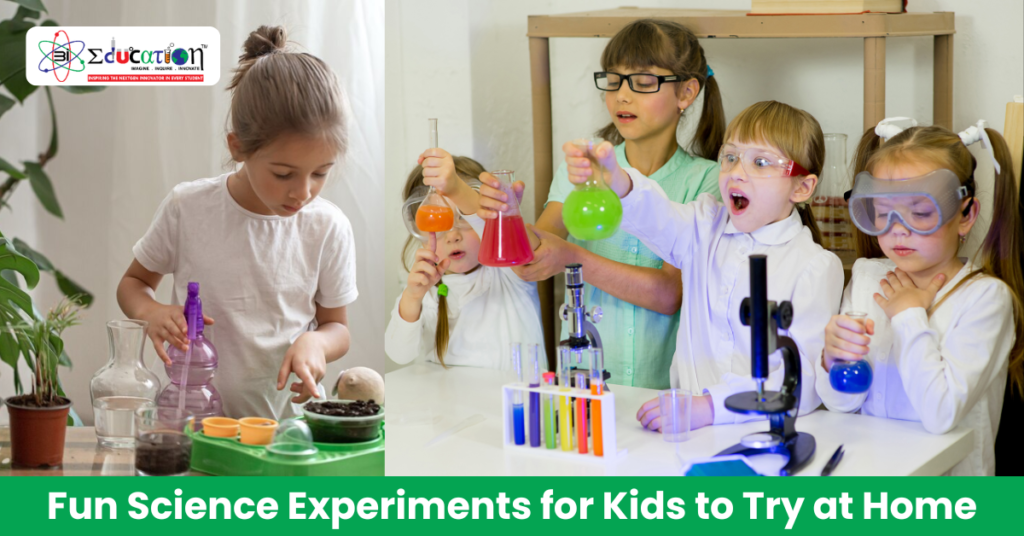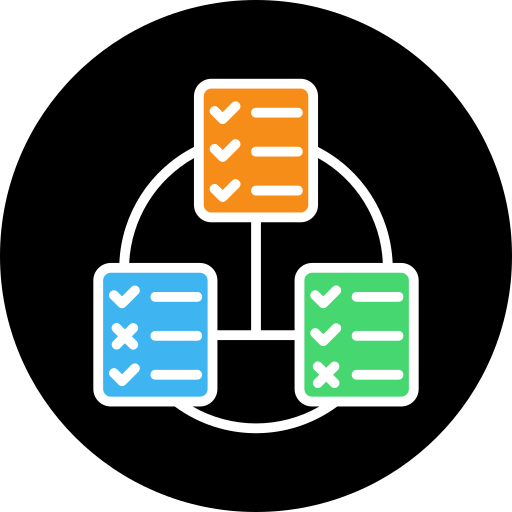Table of Contents

Engaging children in science experiments at home is a fantastic way to ignite their curiosity and foster a love for learning. These hands-on activities not only make complex concepts more accessible but also provide a fun bonding experience for families. Here are some simple, safe, and exciting experiments suitable for kids from grades 1 to 10.
1. Create a Homemade Lava Lamp
Concept: Density and chemical reactions
Materials:
- Clear plastic bottle or glass
- Water
- Vegetable oil
- Food coloring
- Alka-Seltzer tablets
Instructions:
- Fill the bottle about one-third with water.
- Pour vegetable oil into the bottle, leaving some space at the top. Allow the layers to separate.
- Add a few drops of food coloring.
- Break an Alka-Seltzer tablet into pieces and drop one into the bottle.
- Watch as colorful bubbles rise and fall, mimicking a lava lamp.
Science Behind It:
The oil and water don’t mix due to differences in density. The Alka-Seltzer reacts with water, producing carbon dioxide gas, which carries colored water droplets through the oil.
Source : 3kindrednurseries.co.uk
Source : Mommy Poppins
2. Make Elephant Toothpaste
Concept: Chemical reactions and catalysts
Materials:
- Empty plastic bottle
- Hydrogen peroxide (3% solution)
- Dry yeast
- Warm water
- Liquid dish soap
- Food coloring (optional)
- Safety goggles and gloves
Instructions:
- Wear safety goggles and gloves.
- Pour about half a cup of hydrogen peroxide into the bottle.
- Add a squirt of dish soap and swirl gently.
- If desired, add a few drops of food coloring.
- In a separate cup, mix a packet of dry yeast with warm water.
- Pour the yeast mixture into the bottle and step back.
Science Behind It:
The yeast acts as a catalyst, breaking down hydrogen peroxide into water and oxygen. The rapid release of oxygen creates foam that erupts from the bottle.
Source : The Sun
Source : Mommy Poppins
Source : kindrednurseries.co.uk
3. Grow Your Own Crystals
Concept: Saturation and crystallization
Materials:
- Borax powder
- Pipe cleaners
- Boiling water
- Glass jar
- String and pencil
Instructions:
- Shape the pipe cleaner into a desired form (e.g., a star).
- Tie a string to the pipe cleaner and hang it from a pencil.
- Boil water and dissolve borax until no more dissolves.
- Pour the solution into the jar and suspend the pipe cleaner.
- Let it sit overnight.
Science Behind It:
As the solution cools, it becomes supersaturated, and borax particles form crystals on the pipe cleaner.
Souce : Parents
Source : Reddit
4. Invisible Ink with Lemon Juice
Concept: Acid oxidation
Materials:
- Lemon juice
- Cotton swab
- White paper
- Heat source (lamp or iron)
Instructions:
- Dip the cotton swab in lemon juice and write a message on the paper.
- Allow the paper to dry completely.
- Gently heat the paper to reveal the hidden message.
Science Behind It:
Lemon juice weakens the paper fibers. When heated, these areas brown faster, revealing the message.
5. Dancing Raisins
Concept: Buoyancy and gas formation
Materials:
- Clear soda (e.g., Sprite)
- Raisins
- Clear glass
Instructions:
- Fill the glass with soda.
- Drop a few raisins into the glass.
- Observe as the raisins dance up and down.
Science Behind It:
Carbon dioxide bubbles attach to the raisins, making them buoyant and causing them to rise. When the bubbles pop, the raisins sink.
Source : kindrednurseries.co.uk
Souce : kindrednurseries.co.uk
6. Magic Milk Experiment
Concept: Surface tension and chemical reactions
Materials:
- Whole milk
- Food coloring
- Dish soap
- Cotton swab
- Shallow dish
Instructions:
- Pour milk into the dish.
- Add drops of different food colorings.
- Dip a cotton swab in dish soap and touch the milk’s surface.
- Watch the colors swirl and mix.
Science Behind It:
Dish soap disrupts the milk’s surface tension, causing the colors to move and create patterns.
Source : kindrednurseries.co.uk
7. Homemade Slime
Concept: Polymer formation
Materials:
- White school glue
- Baking soda
- Contact lens solution containing boric acid
- Food coloring (optional)
- Mixing bowl and spoon
Instructions:
- Pour glue into the bowl.
- Add baking soda and mix.
- Add food coloring if desired.
- Gradually add contact lens solution, stirring until the mixture becomes slime.
- Knead with hands until desired consistency is reached.
Science Behind It:
The combination creates a polymer, giving slime its stretchy texture.
Souce : Parents
8. Rainbow in a Glass
Concept: Density and layering
Materials:
- Honey
- Corn syrup
- Dish soap
- Water
- Vegetable oil
- Rubbing alcohol
- Food coloring
- Clear glass
Instructions:
- Layer liquids in the glass, starting with the densest (honey) and ending with the least dense (rubbing alcohol).
- Add food coloring to distinguish layers.
- Observe the distinct layers forming a rainbow.
Science Behind It:
Each liquid has a different density, meaning heavier liquids stay at the bottom while lighter ones float on top. This creates a beautiful rainbow effect.
Why Science Experiments at Home Matter
At 3iEducation, we believe learning should be fun and interactive. Science experiments at home allow kids to explore concepts in an exciting way without feeling like they’re studying. These activities help develop problem-solving skills, encourage creativity, and make scientific principles easier to understand.
By performing hands-on experiments, kids become more engaged and curious about the world around them. Plus, parents can bond with their children while reinforcing important STEM (Science, Technology, Engineering, and Mathematics) skills.
Tips for Parents When Doing Science Experiments
- Safety First – Always supervise children, especially when handling chemicals or heat.
- Encourage Questions – Ask kids what they think will happen before the experiment and discuss the results.
- Relate to Real Life – Explain how these concepts apply in everyday situations, like baking (chemical reactions) or floating objects (buoyancy).
- Let Kids Experiment Freely – Science is all about discovery. Even if things don’t work as expected, it’s a learning opportunity!
- Use Simple Language – Avoid complicated scientific terms; make explanations relatable and easy to understand.
Join 3iEducation for More Fun Learning
If you and your child enjoy hands-on learning, 3iEducation offers engaging educational resources tailored for students from grade 1 to 10. Our programs focus on making complex subjects fun and accessible, helping kids build a strong foundation in science and other key subjects.
Want to explore more educational activities? Visit 3iEducation today and start your child’s journey toward a love for learning!







